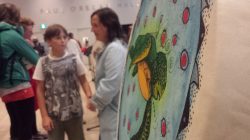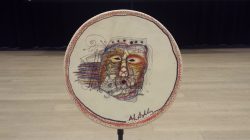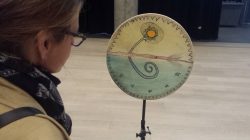Mi'kmaq Culture
Storytelling: From petroglyphs to present-day art
Nova Scotia Mi'kmaq artist makes international statement
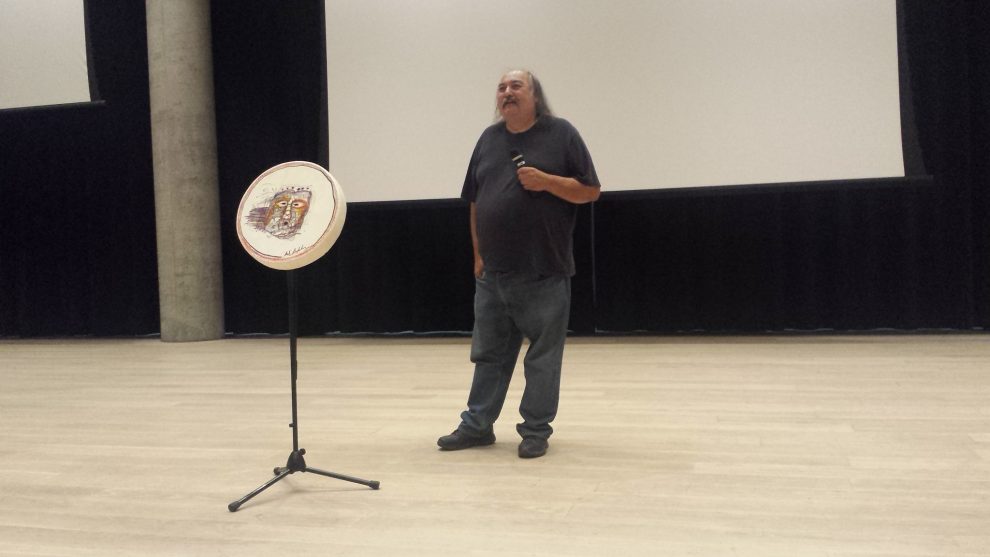
caption
Syliboy tells the story of his childhood.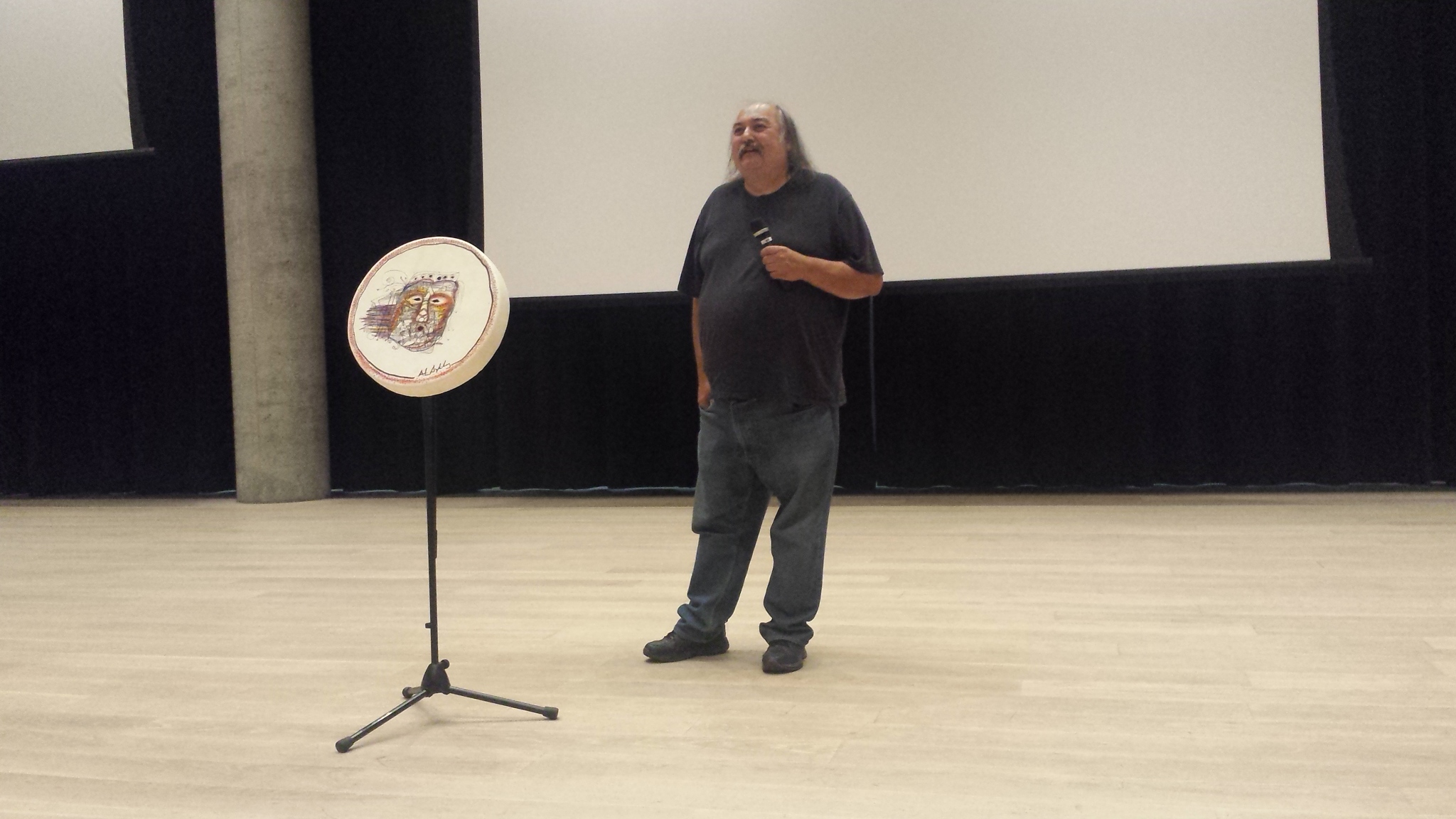
caption
Alan Syliboy recalls his childhood and the time his family was advised not to speak their ancestral language.The sound of drums bounced off the walls and filled Paul O’Regan Hall at the Halifax Central Library Tuesday night.
On stage, two women drummers performed “The Gathering Song,” a traditional Mi’kmaq chant, as 300 guests tapped their feet and hummed along. The chant kicked off a presentation by Mi’kmaq artist, musician and author Alan Syliboy.
His performance was “not a textbook lecture because I didn’t do very well in school so, I made it up,” said Syliboy as he walked onto the stage.
“My whole life is like that; I make it up as I go.”
Syliboy grew up in Millbrook, a community about an hour’s drive north of Halifax. He explained that as a young boy, his family received a letter from the church forbidding them from speaking Mi’kmaq.
“I think that changed everything,” he said. “In no time at all it was gone.”
Despite losing his language at a young age, Syliboy continued to tell stories through art.
“Telling stories, to me, is getting something awake that has been dormant for a long time.”
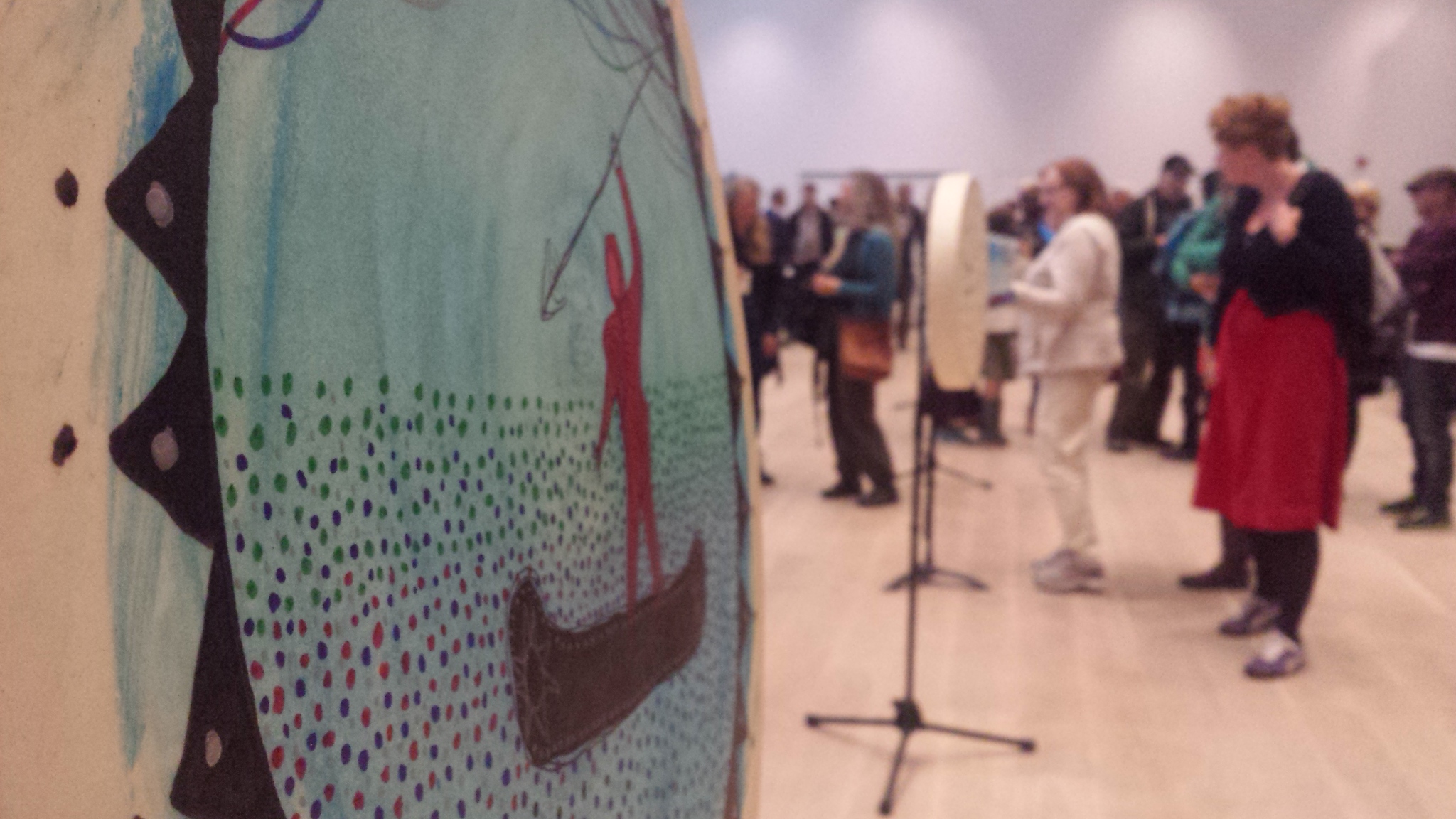
caption
One of Syliboy’s drums on display Tuesday night.Syliboy showed the crowd Little Thunder, a short animation created with Nance Ackerman and inspired by the Mi’kmaq legend “The Stone Canoe,” as he narrated through a microphone.
Next, he played Carry me Home, a short film by Nance Ackerman, which followed Syliboy’s artistic journey as he created a mural of a butterfly at the Halifax Stanfield International Airport.
Petroglyphs
In front of the screens were five drums painted by Syliboy. These, he explained, were inspired by petroglyphs – images carved on rocks using a variety of tools. They play a large part in the history of Mi’kmaq people and can be found in Nova Scotia at Kejimkujik National Park and at McGowan Lake.
Syliboy described petroglyphs as having a deeply spiritual effect on him and as important to the identity of Mi’kmaq people.
“To me, they are very mysterious in the fact that we’re not sure what they are saying to us,” he said.
“We have hints every now and then, we can place some things together, but the puzzle is mostly unknown, the meaning.”
- Guests get a close-up look at Syliboy’s artwork.
- One of Syliboy’s drums.
- A guest checks out one of the intricate designs. (All photos by Sydney Jones)
What’s most special about the petroglyphs, Syliboy explained, is that that he could always tell which ones were made by Mi’kmaq.
“They’re markers for us, they were left for us, they’re written by our ancestors, they were given to us and they belong to us.”
A younger perspective
Michelle Fleming, a NSCAD University student in her final year in a bachelor of fine arts program, said she admired the passion for art and individual creativity Syliboy expressed Tuesday night.
“I thought it was kind of funny and definitely inspiring to just kind of, not always take everything so seriously in arts school.”
Fleming said seeing some of Syliboy’s artwork has made her think a bit differently about school.
“It does make me want to paint more,” she said. “I’ve been stepping away from painting for a bit and just seeing some of his work and the looseness of it … you don’t have to kill yourself going to school 24 hours a day.”
Syliboy’s exhibit Thundermaker will open Oct. 11 at 5:30 p.m. at the Anna Leonowens Gallery in Halifax.
